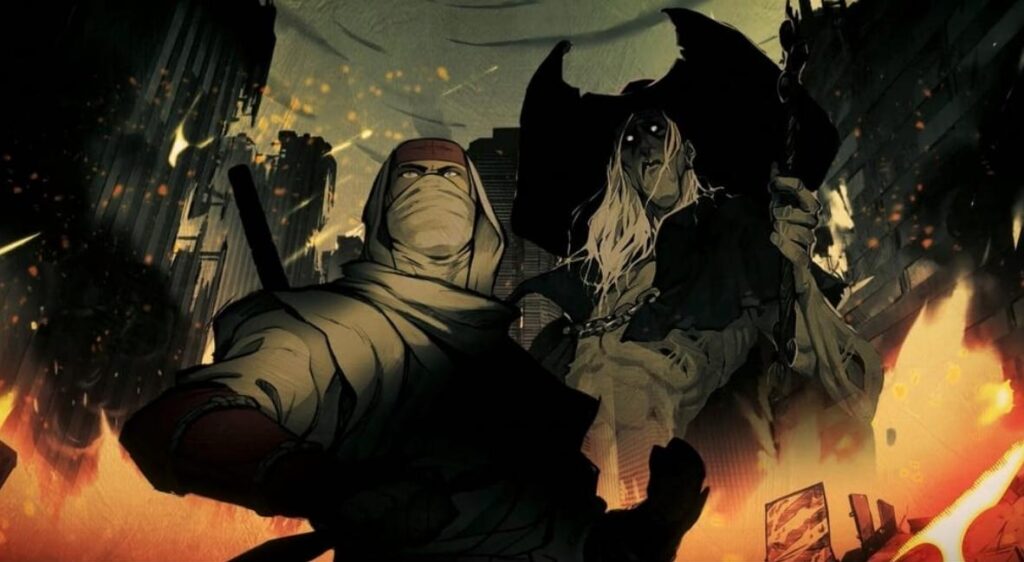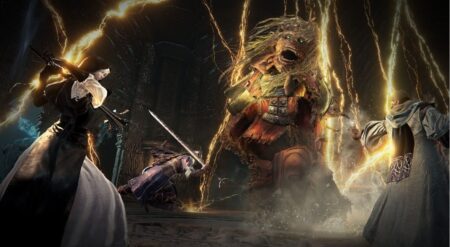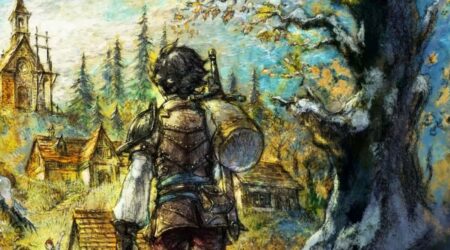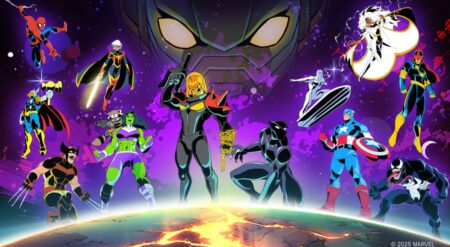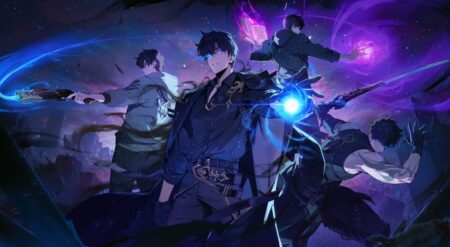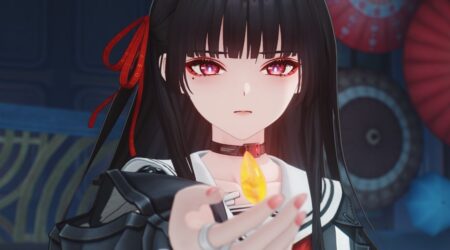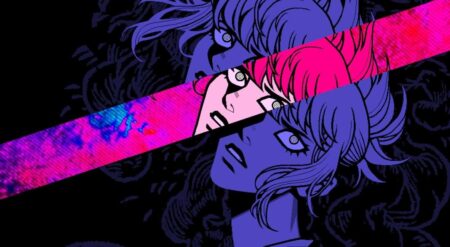In my hierarchy of “Things that will always be cool”, ninjas rank right up at the top alongside dragons and giant transforming/combining robots, so it comes as no surprise that I am loving the moment that ninjas are having right now. SEGA is joining the celebration with a brand new reimagining of their classic Shinobi series with Shinobi: Art of Vegeance, standing alongside the likes of ninja brethren, including the latest Assassin’s Creed game and the three Ninja Gaiden titles for this year.
Now, having slashed, jumped, and grappling-hooked my way through Joe Musashi’s outing, I can confidently say it is one of my favorite games of the year so far.
As someone who was a Super Nintendo kid, my first experience with SEGA’s ninja series wasn’t until 2002’s Shinobi on the PlayStation 2 with Hotsuma and Joe as a special unlockable character (Team Hotsuma for life). I’m not too up to date on the lore of Joe and the Oboro Clan, but this latest Shinobi’s story feels like it has been ripped straight out of an early ’90s video game.
After Joe’s clan – the Oboro Clan – and village are destroyed by Ruse, a powerful figure bent on world conquest, Joe sets out to take revenge and take care of this latest threat. What follows sees Joe infiltrating the likes of a submarine, a possessed train, and a large festival, among others. Surfing level included. The story doesn’t do much more than provide a variety of unique places for Joe to let loose his fury, but there are some fun twists. My favorite was discovering Ruse’s backstory and source of his power, which once again feels like something straight out of a game from the ’90s.
Shinobi: Art of Vengeance’s story feels like it has been ripped straight from the ’90s.
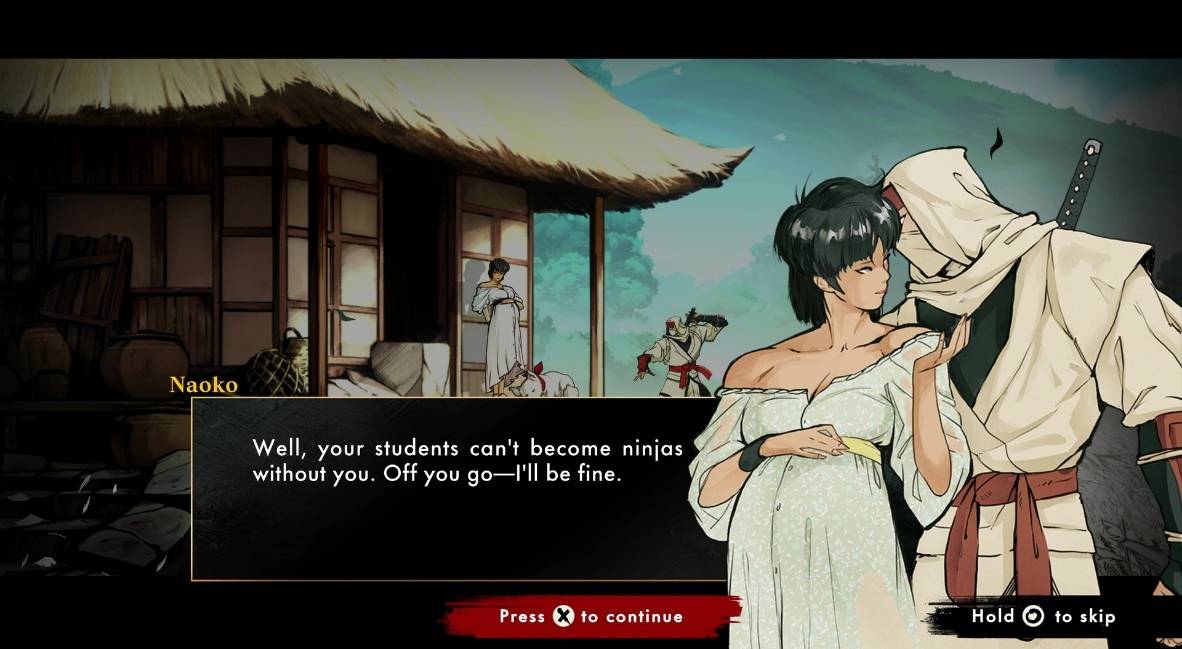
There are two standout aspects of this Shinobi reboot: its visuals and its gameplay, particularly its combat. When it comes to the looks, Shinobi Art of Vengeance is one of the most striking-looking 2D games that I have played in a long time. Opting for a hand-drawn look, everything from the enemies, backgrounds, special effects, and Joe himself has been created with care and precision.
Backgrounds feature multiple layers and showcase classic side-scrolling parallax effects, adding depth and reminding me of my time as a kid playing 16-bit games. Joe’s special attacks, his Ninpo, fill the screen and would feel right at home in the best shonen anime out there, as he summons giant flaming serpents, mystical water spirits, and more.
And I have to give bonus points for Joe, basically charging up Dragon Ball Z style to do them. The first time I witnessed it left me with so much giddiness that I felt as though I had just shot down a few espresso shots. These screenshots don’t do the game enough justice, and seeing it in motion is a spectacle on a whole other level.
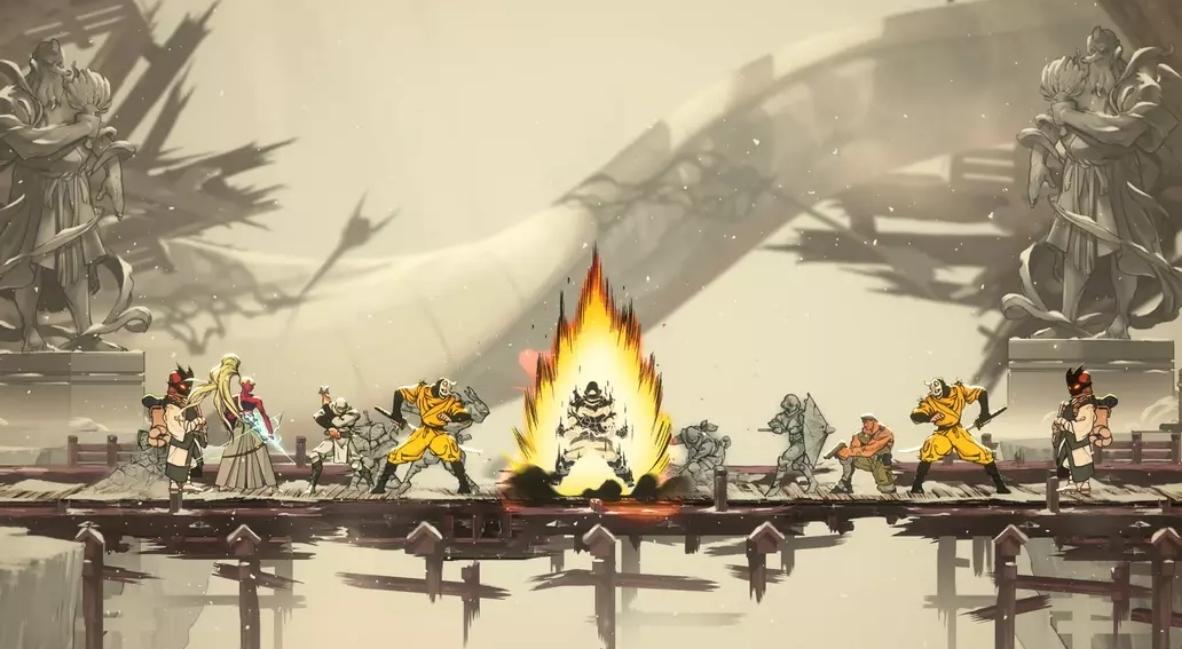
Despite the graphics and the retro story, what kept the controller glued to my palms long after I should have gone to bed is Shinobi’s gameplay. Let’s touch on the general flow first – Shinobi feels far more akin to a Metroidvania than a standard action platformer, where you run through a linear level, taking out enemies before a level boss at the end.
While each level is linear in the sense that each level is self-contained with a clear path from its beginning to end, there are various areas and paths that you can discover that will lead to various collectibles and unlockable goodies you can discover. Some of these paths require special upgrades or new abilities to unlock, breakable walls that can only be destroyed with a charged-up punch ability, for example, incentivizing and teasing you to come back to previously completed stages once you can bypass those obstacles.
If the idea of backtracking is a big turn-off, just know that this is completely optional and you can complete the game just fine without doing so. But, if you do want Joe to be the very best ninja he can, Shinobi: Art of Vengeance makes the backtracking relatively painless, with a mostly solid minimap full of markers and fast travel points.
Shinobi offers a lot to explore, even its linear level structure.
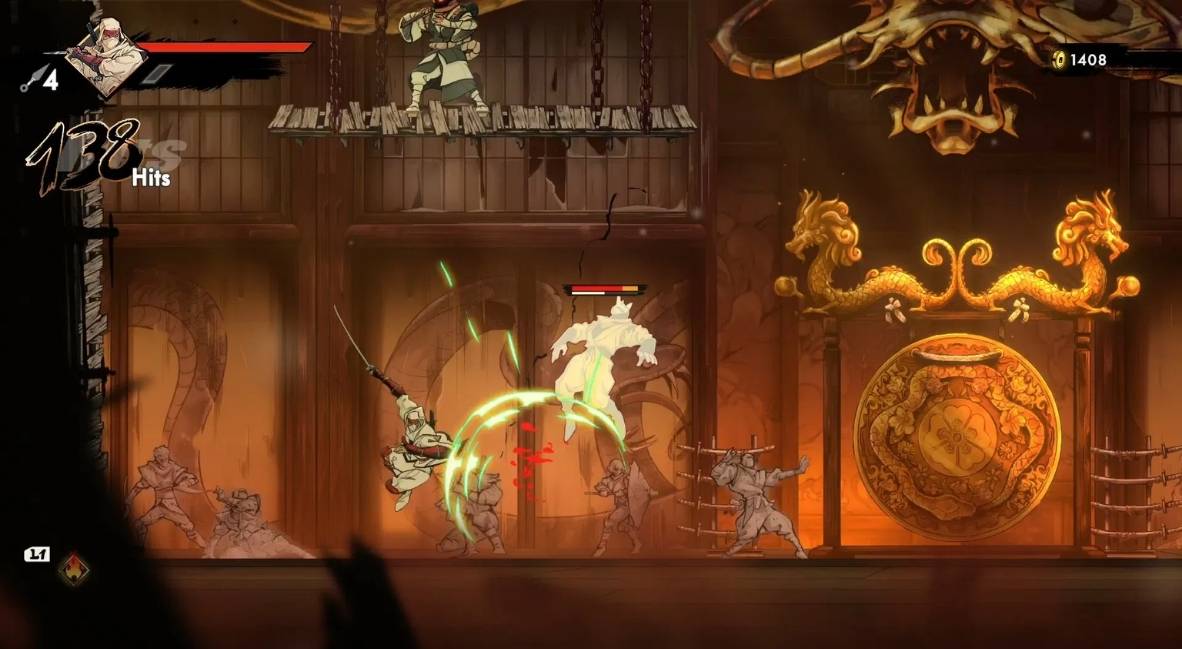
Whether you are working through a level for the first time or going back to try and find those chests or challenge fights you are missing, each stage features multiple fast-travel points, icons for things you may missed (as long as you came close enough to where they are located that is), and color-coded highlighted areas to help point you in the right direction for finding those secrets. The fast travel works great, but the mini-map functionality could use a little work.
From what I could find, there is no explanation as to what exactly the purple and yellow highlights actually are within the game, and once you collect the hidden item within those areas, the highlight doesn’t go away. This fact alone resulted in more wasted time than I care to admit, thinking there was still something to be found. On the flipside, the helpful icons that populate your map only remain until you collect them. This extends to locked doors you have opened and collectibles you have found, too, which made one level in particular, which takes place in a lab, a particular pain in the butt.
Overall, I found the levels to be pretty solid in Shinobi Art of Vengeance (maybe lasting a little too long from time to time), but this Lab brought me closer to raging than any of the bosses. The gimmick is that you have to find ways to unlock the various doors around the lab to progress, each color-coded to a different terminal you have to find and break. The problem arose that when the doors were locked, they clearly were shown on the map, but once you broke the console and unlocked them, their icons would disappear.
Shinobi’s only flaw is its approach to its mini-map.

Unless you had taken screenshots or have a good memory, I had no indication of where those doors I unlocked were. I would love a future patch to add greyed out versions of icons to show they have been unlocked/collected, or give me placeable persistent markers that I could place down to keep track myself. Either option would resolve most of my issues with tracking and the map.
What has stuck with me most from my time with Shinobi: Art of Vengeance is its combat and movement gameplay. Adopting a heavy combo-focused combat, Shinobi at times reminds me of a fighting game, as I juggled opponents in the air, seeing how long I could keep them in the air, powerless against my attacks, or how I could keep them in a stun-locked state, unable to act.
I loved knocking a boss into the air, stringing quick strikes into a hard kick into the ground, comboing into a string of kunai into them, or a dive kick to keep the attacks going. Every hit whittles down their stamina bars until I can deliver the devastating screen-wide execution attacks.
With every new ninja tool or attack move I unlocked, I was granted new ways to deliver Joe’s sweet revenge. Some of the most fun I had in Shinobi: Art of Vengeance was spending time in the Training Grounds, perfecting my combos. Granted, this did make things a bit easier than I would have liked, but it’s still a blast all the same.
I wouldn’t be against the team adding a super challenging gauntlet mode eventually to really put my combat skills to the test. Once you finish the story mode for the first time, you unlock an Arcade mode, which lets you play the stages trying to earn as many points as you can, and a boss rush mode to test your mettle against.
Lizardcube’s Shinobi: Art of Vengeance is how you do a reboot right.
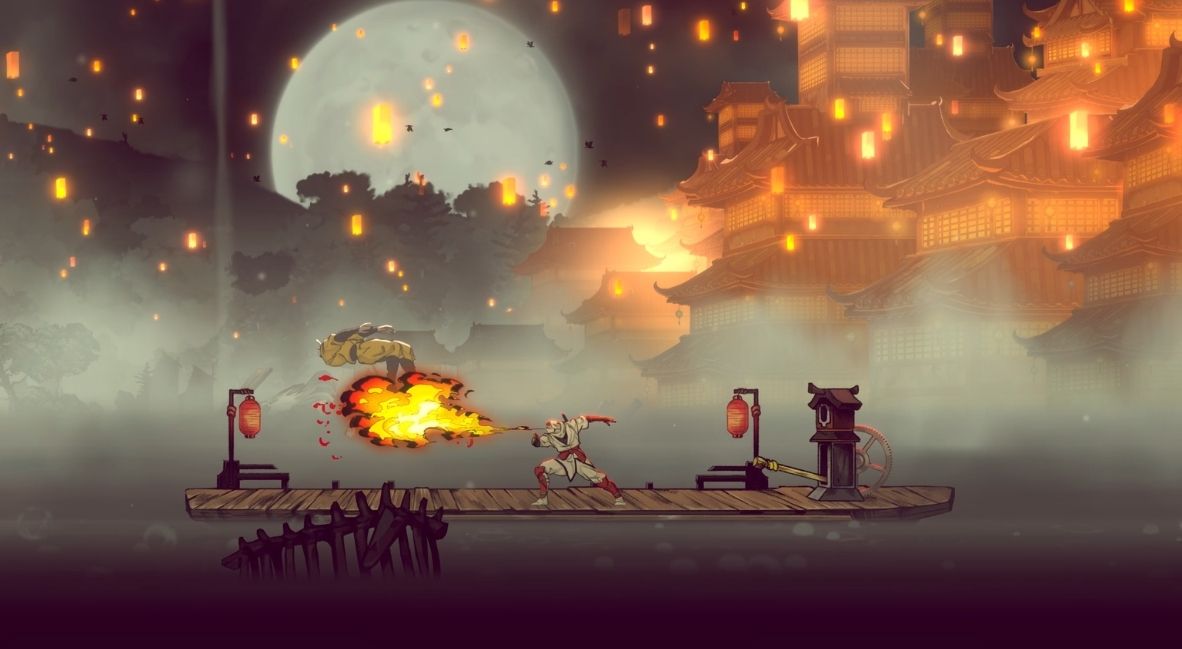
If things do ever get too challenging, or you just want a more relaxing “revenge-seeking ninja” time, Shinobi does offer a nice amount of difficulty accessibility options that let you tweak how much damage enemies do, how much health they have, and a handful of other things. It is a bit of a shame that this can’t be used to add challenge, but what is offered is still nice to have.
Movement also feels really solid in Shinobi: Art of Vengeance, with levels providing a good variety of platforming challenges to get past. There are a couple of segments that can be a bit punishing, with instant-death traps or narrow spaces you need to navigate through, but thanks to the quick respawns and tight responsive controls, I never found these moments to be too annoying. The most challenging examples are found in the Enkidou Gate special areas that you need to complete to get the special Dark Katana secret weapon.
Developer Lizardcube continues to prove with Shinobi Art of Vengeance that when it comes to rebooting classic 2D franchises, few do it as well as they. After trying Shinobi at Summer Games Fest, I knew this game was going to be good, but I had no idea just how much I was going to love it.
While it doesn’t manage to deliver a flawless experience, with some annoying stages and the mini-map headaches I mentioned, the combat, visuals, and overall feel of the game more than paves over any minor issues I encountered. I can’t remember the last time I had as much fun with this sort of game as I did with Shinobi: Art of Vengeance, and for fans of 2D action games, it is a must-play. Fans of ninjas continue to feast.
Shinobi: Art of Vengeance
-
Rating - 9/109/10
TL;DR
I can’t remember the last time I had as much fun with this sort of game as I did with Shinobi Art of Vengeance, and for fans of 2D action games, it is a must-play. Fans of ninjas continue to feast.

